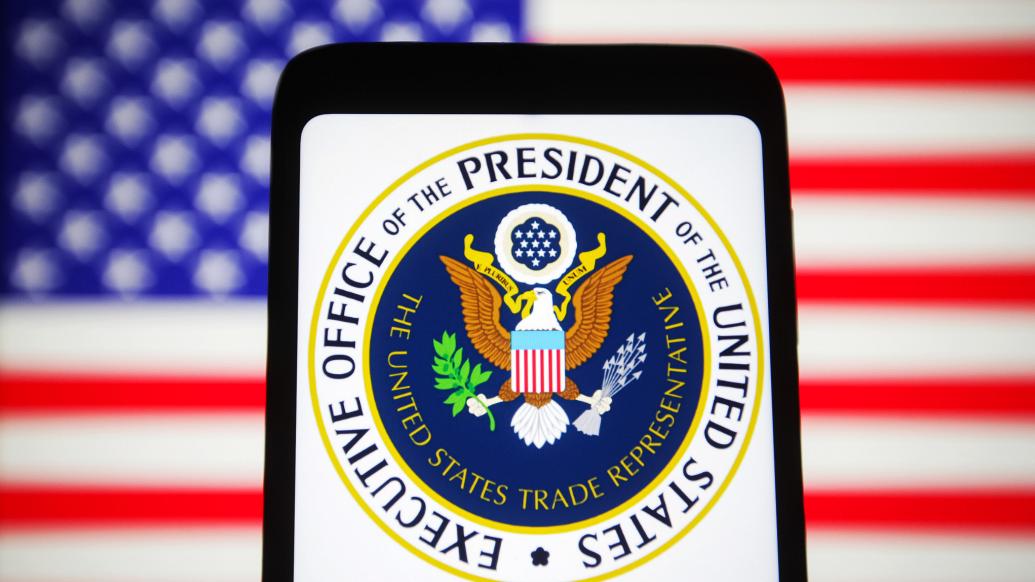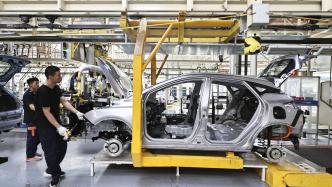
On May 14, the US government announced that it would impose additional tariffs on Chinese electric vehicles and other products.
The White House announced that the new measures will affect $18 billion worth of goods imported from China, including steel and aluminum, semiconductors, batteries, key minerals, solar cells and cranes.
According to the White House official website, tariffs on Chinese electric vehicles will be increased from the current 25% to 100%.
This clearly drastic move undoubtedly sacrifices the United States' long-term efforts to address climate change.

Office of the United States Trade Representative logo
Analysts say that there are not many Chinese-made electric vehicles in the U.S. market, so higher tariffs on electric vehicles will have little impact on consumers. In contrast, tariffs on batteries, graphite, motors, rare metals and other items may affect a larger number of electric vehicles.
The Biden administration announced in April that it plans to increase the share of electric vehicles from 8% in 2023 to 56% in 2032. In this regard, local automakers have said that it is difficult to achieve, and one of the important reasons is to "keep out" electric vehicles made in China or containing Chinese components.
The automakers say electric vehicles would be too expensive for mainstream U.S. consumers without low-cost batteries and battery materials made in China.
"From mining to batteries to all technology integration, the Chinese supply chain is now the leading supply chain," a Chinese automaker representative said at an industry forum last week. "Why not allow an American company to freely choose the best supplier?"
There are also differences within the United States over the practice of imposing high tariffs on Chinese electric vehicles.
Michael Dunne, an expert who has long been concerned about the Chinese auto industry, believes that "tariffs will buy important time." The United States is five to seven years behind China in the electric vehicle and battery supply chain. Dunne believes that China protected its own automakers in the 1990s and early 2000s, and "we are just borrowing a page from China's playbook."
Environmentalists who advocate for faster adoption of electric vehicles to reduce U.S. carbon dioxide emissions have warned that additional tariffs would be counterproductive.
In the long run, American automakers hiding in the "high tariff greenhouse" may get a short-term respite, but another possibility is that this will force Chinese automakers to adopt more advanced technology and processes to fundamentally crush American automakers. Just like the Japanese brands that also suffered policy discrimination and import restrictions, Toyota and Honda eventually used lean production to beat GM, Ford, Chrysler and other automakers without any resistance.
Today's automotive industry is no longer a few isolated islands that can be simply divided by the Milky Way. Instead, it is an era where the industrial chain is intertwined and brands cooperate and share with each other. Therefore, the impact of imposing tariffs on electric vehicles made in China on Chinese brands is not even as great as that on American brands. This is because many of the models exported from China to the United States are American brands.
According to U.S. government data, in 2021, U.S. automakers exported 155,000 vehicles worth $6.3 billion to China, while China exported only 64,000 vehicles worth $1.45 billion to the U.S. In 2023, China's auto sales to the U.S. shrank further to $368 million.
According to foreign media reports, currently, four product lines of cars sold in the United States are manufactured in China - Lincoln Navigator, Buick Envision, Polestar 2 and Volvo S90. According to data from the US Department of Transportation, those American brand electric vehicles, such as Ford Mustang Mach-E or Tesla Model 3, actually have 30%-51% of their parts coming from Chinese companies.
So, who suffers more from high tariffs?
General Motors President Mark Reuss has already expressed his views. He said: "We have established deep cooperative relationships with Chinese partners over the years, which is a great advantage for us. For example, Buick is both an American brand and a half-Chinese brand."
While European politicians are following the example of the United States and planning to impose higher tariffs on Chinese electric vehicles, Stellantis, which is working with Leapmotor to sell Chinese cars to Europe, is using its "honest bodies" to prove that the world cannot do without Chinese cars.

